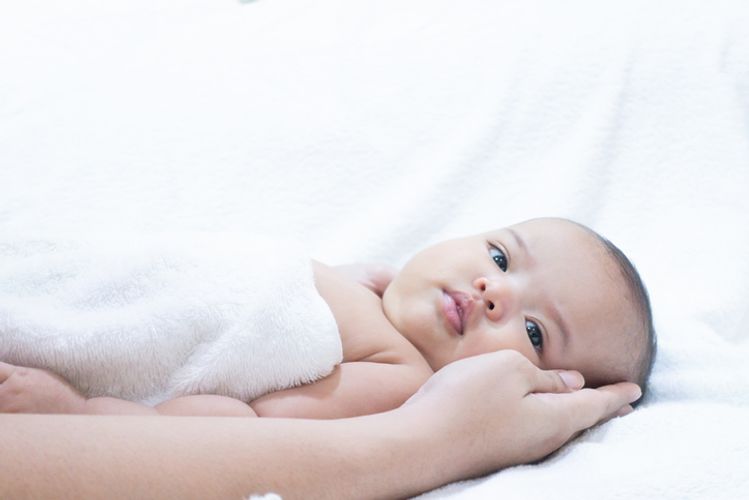Many different cultural traditions around the world have given rise to their own forms of massage therapy, and massage has persisted as an essential health and wellness practice for thousands of years.
It's truly remarkable to consider that similar massage therapy practices were prized in ancient China and Egypt (reflexology), derived from French techniques and codified by a Dutch physician in the mid-1800s (Swedish massage), and used today in settings ranging from mall kiosks (chair massage) to hospital oncology units (therapeutic massage) to the elite locker rooms of the NFL (sports massage).
There is good reason for the ubiquity and longevity of massage therapy, however. Human bodies have been experiencing pain, injury and dysfunction as long as they have existed. Human beings have suffered from psychological stress for just as long.
Skilled touch has always been a powerful way to alleviate some of these inevitable discomforts and difficulties of living. It also feels good, providing us a way to soothe, nourish, and treat each other during our busy journeys through life.
Massage therapy in all of its forms releases muscle tension, loosens muscle knots (sometimes called trigger points), breaks up scar tissue, and softens adjacent connective tissue by increasing blood flow. This helps improve flexibility and range of motion, release pain and stiffness in muscles and joints, provides greater mobility, and relieves pain. Many other health benefits of massage flow from these effects.
There are few other things we humans can do for each other that qualify as both indulgent luxury and effective medical treatment. When you really think about it, massage is pretty amazing!
Are you familiar with all of the health and wellness benefits massage therapy can boast? There are many - too many to include them all here. But we've rounded up some of the most incredible benefits of massage to give due credit to this simultaneously ancient and cutting-edge healing art. Here are just some of the more noteworthy benefits of massage:
1. Massage therapy may help resolve the opioid addiction epidemic.
Massage therapy has been shown in study after study to be a safe and effective treatment for people in pain from a variety of health conditions,1 reducing their pain symptoms as well as the psychological stress that often accompanies them in the form of anxiety and depression.
In the wake of the enormously damaging opioid addiction crisis, public health professionals, policymakers, and patients alike are advocating for increasing the use of complementary and alternative therapies in general2 and massage therapy3 especially as a safer effective strategy for pain management in many cases than addictive opioid drugs.4
Massage therapy has been shown to reduce pain symptoms and improve quality of life for patients suffering from a range of chronic pain conditions, including fibromyalgia, low-back pain, arthritis and more.
2. Massage therapy helps preemie infants grow, gain weight, and leave the hospital faster.
Neonatal intensive care units focus much of their attention and energy trying to get tiny, underdeveloped babies to grow and gain weight. Massage therapy has been shown to stimulate healthy growth and development among hospitalized preterm infants.
These tiny patients have shown increased vagal and gastric activity, higher serum insulin levels, better neurodevelopment and brain development, lower incidence of sepsis, reduced signs of stress, and overall shorter hospital stays than similar patients who did not receive therapeutic massage treatment.5 They put on more weight, increased their bone density and significantly reduced medical expenses related to their care!6
Massage therapy is increasingly being touted as a crucial tool for use in neonatal intensive care units as a result of these impressive research results.
3. Regular massage therapy can likely reduce your risk for a range of serious diseases.
Massage therapy has been shown to help reduce stress levels, down to the chemical level,7 including reduction in stress hormones like cortisol and lower blood pressure. Massage has been shown to be effective in treating chronic stress caused by a variety of sources, including workplace stress.89
Chronic stress is thought to impact long-term health by damaging the immune system and harming many organs and body systems through mechanisms only beginning to be studied and understood.10
While the precise mechanisms need further examination and study, there is good evidence that chronic stress can increase people's vulnerability to a range of serious health conditions, such as cancer, cardiovascular disease,11 and diabetes.
Since a regular massage therapy program can be an effective way to reduce stress, it can also likely play a role in reducing your risk for a variety of serious diseases.
4. Massage therapy can aid in pregnancy and childbirth.
Massage therapy is gaining increasing prominence for its usefulness during pregnancy, labor, delivery, and in the postpartum period for new mothers. After all, this period of a woman's life can be exciting but also involve significant physical and psychological stress - symptoms that massage is famously wonderful at alleviating.
Massage therapy has been shown effective in reducing many of the discomforts of pregnancy, including nausea, leg pain, foot and ankle swelling (edema), anxiety and depression, and labor pain. Women treated with massage therapy during labor had shorter labors and used less pain medication. Women who experienced depression before their baby was born and were treated with massage were less likely than women who did not receive massage treatment to have premature births and low birth weight. Postpartum massage therapy has been shown to decrease depression and stress hormone levels in new mothers.12
5. Massage therapy can improve & prolong breastfeeding for new mothers and their infants.
Breastfeeding is recommended whenever possible for new mothers, since breastmilk offers many beneficial health benefits for babies, especially in strengthening their immune systems. Breastfeeding also boosts maternal health.
However, breastfeeding can be difficult and painful for women and these challenges often lead new mothers to stop breastfeeding earlier than the minimum six-month period recommended by the World Health Organization.
Breast massage, regardless of the type of massage, has been shown to be helpful in reducing pain associated with breastfeeding and helping to ameliorate symptoms of blocked milk ducts, engorgement and mastitis. Breast milk supply may also be increased through massage. All of these results may help women breastfeed longer,13 leading to better health outcomes for the women and their babies.
6. Massage therapy helps soothe children with severe digestive problems.
Traditional Chinese medicine has long employed massage therapy for treating pediatric diarrhea. A broad meta-analysis that included many studies provided scientific support for this practice, concluding that "paediatric massage was significantly better than pharmacotherapy in treating acute diarrhoea in children in terms of clinical effective rate ...clinical cure rate ...and cure time".14
This is an important finding, as pediatric diarrhea is very common across the developing world and often poses a serious threat to children's health.
7. Massage therapy can boost immune system functioning.
Clinical trials are increasingly suggesting that massage therapy can make your immune system function better.
One study showed that "massage-like stroking" of mice boosted their immune systems in a number of measurable ways, including higher T-cell counts, though the exact mechanism for how this works is not yet well understood.15
Another study in humans looking at massage therapy's impact on immune function concluded that "There are sustained cumulative biologic actions for the massage and touch interventions that persist for several days or a week, and these differ profoundly depending on the dosage (frequency) of sessions".16
In other words, regular massage therapy sessions provide the greatest benefit in boosting immune system functioning.
The Bottom Line
Massage therapy has been a trusted method for boosting human health and wellness for thousands of years for good reason!
Modern research is just catching onto the usefulness of massage for treating many specific conditions, but the overall benefits of massage therapy for health and well-being are undeniable.17 And, unlike many medical treatments and health-boosting activities, massage is thoroughly enjoyable to nearly everyone.
For these reasons and more, medical researchers, health care providers, public health professionals and ordinary people are increasingly viewing massage therapy as an essential element of any effective health and wellness routine.
References:
1 "Advocacy Work on Massage for Pain Management": https://www.amtamassage.org/advocacy/federal-priorities/advocacy-massage-for-pain-management/
2 "To Curb Pain Without Opioids, Oregon Looks To Alternative Treatments": https://www.npr.org/sections/health-shots/2015/09/22/436905063/to-curb-pain-without-opioids-oregon-looks-to-alternative-treatments
3 "Chronic Pain Management Therapies in Medicaid: Policy Considerations for NonPharmacological Alternatives to Opioids": https://nashp.org/wp-content/uploads/2016/09/Pain-Brief.pdf
4 "Massage as an Alternative to Opiods": https://www.amtamassage.org/resources/massage-and-health/alternative-to-opioids/
5 "The Effects of Massage Therapy in Hospitalized Preterm Neonates: A Systematic Review": https://www.sciencedirect.com/science/article/abs/pii/S0020748917300433
6 "Preterm Infant Massage Therapy Research: A Review": https://www.ncbi.nlm.nih.gov/pmc/articles/PMC2844909/
7 "Massage Therapy Can Relieve Stress": https://www.amtamassage.org/about/position-statements/massage-therapy-can-relieve-stress/
8 "Massage Therapy in the Workplace: Reducing Employee Strain and Blood Pressure": https://www.ncbi.nlm.nih.gov/pubmed/20518225/
9 "The Effect of Massage Therapy on Occupational Stress of Intensive Care Unit Nurses": https://www.ncbi.nlm.nih.gov/pmc/articles/PMC4525352/
10 "The Effects of Chronic Stress on Health: New Insights into the Molecular Mechanisms of Brain-Body Communication": https://www.ncbi.nlm.nih.gov/pmc/articles/PMC5137920/
11 "Heart Disease and Stress: What's the Link?": https://www.webmd.com/heart-disease/guide/stress-heart-disease-risk
12 "Pregancy and Labor Massage": https://www.ncbi.nlm.nih.gov/pmc/articles/PMC2870995/
13 "Effectiveness of Breast Massage for the Treatment of Women with Breastfeeding Problems: A Systematic Review": https://www.ncbi.nlm.nih.gov/pubmed/31135656
14 "Paediatric Massage for Treatment of Acute Diarrhoea in Children: A Meta-Analysis": https://www.ncbi.nlm.nih.gov/pmc/articles/PMC6145333/
15 "Massage-Like Stroking Boosts the Immune System in Mice": https://www.ncbi.nlm.nih.gov/pmc/articles/PMC4650642/
16 "A Preliminary Study of the Effects of Repeated Massage on Hypothalamic-Pituitary-Adrenal and Immune Function in Healthy Individuals: A Study of Mechanisms of Action and Dosage": https://www.ncbi.nlm.nih.gov/pmc/articles/PMC3419840/
17 "Massage Therapy for Health": https://www.amtamassage.org/resources/massage-and-health/


